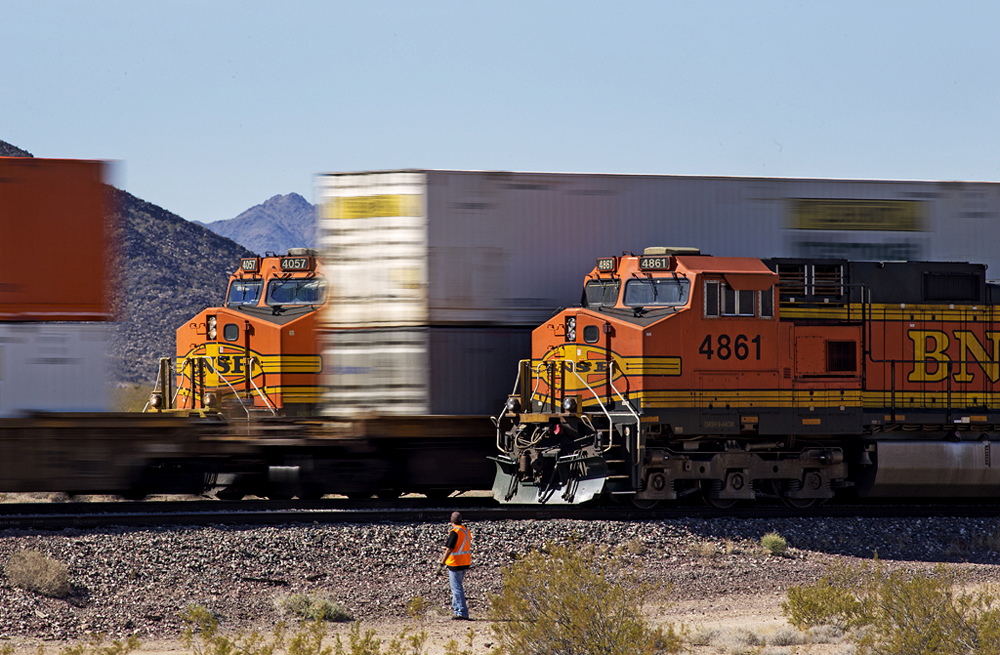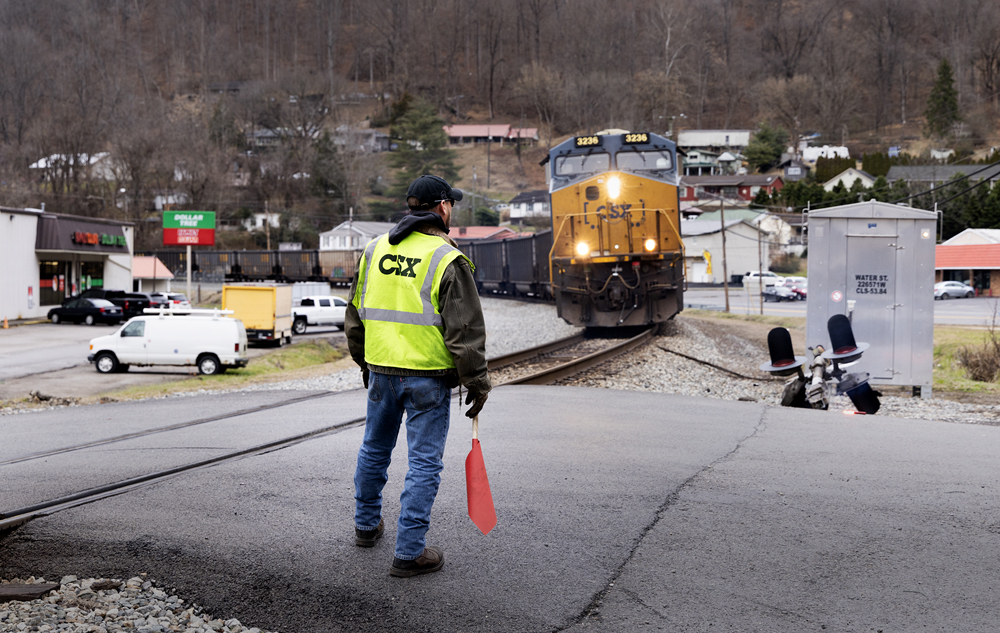
First of two parts.
CHARLESTON, W.Va. — Navigating macroeconomic headwinds and steep declines in coal, three of the big four U.S. railroads now employ more engineers and conductors than they did a year ago, but headcount is still mostly below pre-pandemic 2019. Railroads are =using new hires to improve service performance and grow future business across a vast, complicated rail network that is less dependent on coal than before the pandemic.
In the west, Union Pacific has 146 more engineers and conductors than a year ago and BNSF Railway has added 57 engineers and conductors, according to labor data provided to the Surface Transportation Board last month. As of June, BNSF and UP’s T&E headcounts are 15,672 and 15,163, respectively.
Each railroad has added about 3,000 engineers and conductors since the pandemic’s onset in 2020, but headcount is still 3,000 railroaders below pre-pandemic 2019. Both railroads had more than 18,000 engineers and conductors in 2019 before furloughs and cutbacks slashed those numbers into the 12,000s in 2020.
Comparing the five-year period between June 2019 and June 2024 reveals T&E headcounts are down 13% at BNSF and 15% at UP. This doesn’t imply the nation’s two largest Class Is have too few railroaders to move today’s trains, or meet future freight demand. BNSF and UP have witnessed significant declines in coal as the U.S. shutters coal-fired power plants.
BNSF moved 4.5 million carloads and intermodal units through the first six months of 2024, compared to more than 5 million in the first six months of pre-pandemic 2019. Coal accounted for 62% of that 9% decline in volume, equal to almost 306,500 fewer carloads.
The story is similar at UP, where total traffic is down 5% compared to pre-pandemic levels. The Omaha-based Class I moved 4 million carloads and intermodal units through the end of June 2024, about 220,000 fewer carloads and intermodal units than five years ago. Coal is responsible for 77% of the decline, or about 171,000 carloads.
Coal’s decline means BNSF and UP don’t require as many crews to shuttle unit coal trains between Powder River Basin mines and coal-fired power plants. Instead, current headcounts likely reflect what is needed to move current rail business, while giving both railroads the chance to flex additional manpower as freight demand increases or service consistency helps sway more business to rail.
As of mid-July, BNSF had 30 job postings available online, but none were for train crew. UP is only advertising four train crew positions across its 32,000-mile network.
In the East, CSX Transportation is setting the example. Its T&E headcount is the highest it has been since 2018, with 7,900 workers on the roster. The railroad has hired 340-plus railroaders since last year with its T&E workforce 2% higher than pre-pandemic June 2019. The railroad’s total volume through June 2024 is similar to five years ago, despite a 75,000-carload decrease in coal. CSX has offset fewer domestic coal moves with a shift to export coal and business gains in intermodal and merchandise. The railroad’s volume through the first six months of 2024 totaled 3.1 million carloads and intermodal units, only 11,000 below the same period five years ago.
And CSX is still looking to hire, seemingly underlining its commitment to leverage frontline workers to attract more business. CSX has active job postings for 48 train conductors across the network, notably in merchandise-rich hubs like Birmingham, Ala., Chicago, Cincinnati, Ohio, Cumberland, Md., Nashville, Tenn., Selkirk, N.Y., and Waycross, Ga., among other terminals.

Norfolk Southern is the exception among big U.S. railroads. The railroad has about 190 fewer T&E service workers than a year ago, with headcount totaling 8,545 engineers and conductors in June 2024, compared to 8,736 in 2023. The railroad’s total T&E headcount is 17% below pre-pandemic and across the same five-year period, volume is down 10%.
NS has moved 3.4 million carloads and intermodal units through June 2024, compared to 3.8 million five years ago. Of the 408,000-fewer carloads and intermodal units, coal’s share is 38%, or 156,000 carloads. Volume is also down across a broader group of merchandise commodities, notably petroleum and pulp and paper shipments.
Despite a downtown in business, NS is focused on maintaining crew levels to provide consistent service and gain volume in the long-term, as its CEO Alan Shaw has reiterated at scores of industry and investor events [see “Wall Street analysts welcome Norfolk Southern’s service and growth plan,” Trains News Wire, Dec. 7, 2022].
Of the 78 available jobs on NS’s website, only one is for a train conductor, perhaps suggesting that NS’s current T&E workforce is sized to execute Shaw’s vision by maintaining current headcount and attracting business in the long-term.
The U.S. is still in somewhat of a mild freight recession and stagnant GDP growth as the economy awkwardly rebalances from a lengthy pandemic recovery. Railroads aren’t narrowly fixated on current headwinds and appear to be focused on the long-game. A positive economic jolt could increase future freight demand and reward railroads for their proactive thinking. The next few months will be important.
Part two of this article will look at railroads’ maintenance-of-way and mechanical crafts.













